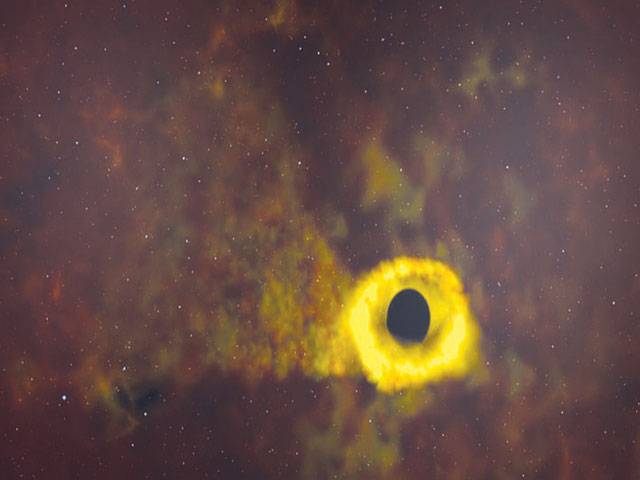WASHINGTON-The U.S. space agency NASA’s planet-hunting Transiting Exoplanet Survey Satellite (TESS) have observed the rarely-seen aftermath of a star that was violently ripped apart by a supermassive black hole. The study published in this week’s Astrophysical Journal described the tidal disruption event around 375 million light-years away. The event tends to occur when a star gets too close to a supermassive black hole and the black hole’s forces overwhelm the star’s gravity and tear it to shreds.
Some of its material gets flung out into space and the rest falls back into the black hole, forming a disk of hot, bright gas as it is consumed, according to the researchers. The disruption occurred in TESS’s southern continuous viewing zone, allowing the space telescope and other follow-up observations to record the whole process of the cannibalism. TESS’s extremely wide field-of-view and continuous coverage make it a great tool for detecting and monitoring the event.
By observing the light given off during this process, which increases to a peak brightness and then tapers off, astronomers can better understand the physics of the black hole and the forces behind the phenomena. Then, they used UV data from Swift Observatory, NASA’s another space telescope, to determine that the temperature dropped by about 50 percent, from 40,000 to 20,000 degrees Celsius, over a few days.
Saturday, April 20, 2024
NASA’s space telescopes see black hole shredding star

Heavy rains claim 98 lives, 89 injuries, across Pakistan: NDMA
1:21 PM | April 20, 2024
Watercourse project to help increase crop yields in Punjab
12:57 PM | April 20, 2024
Justice Ishtiaq Ibrahim sworn in as PHC chief justice
12:54 PM | April 20, 2024
Policitising Tragedy
April 20, 2024
Tehran to Rafah
April 20, 2024
A New Leaf
April 20, 2024
A Tense Neighbourhood
April 19, 2024
Dubai Underwater
April 19, 2024
Dangers of Deepfakes
April 20, 2024
Feudalism
April 20, 2024
Kite tragedy
April 19, 2024
Discipline dilemma
April 19, 2024
Urgent plea
April 19, 2024
ePaper - Nawaiwaqt
Advertisement
Nawaiwaqt Group | Copyright © 2024





